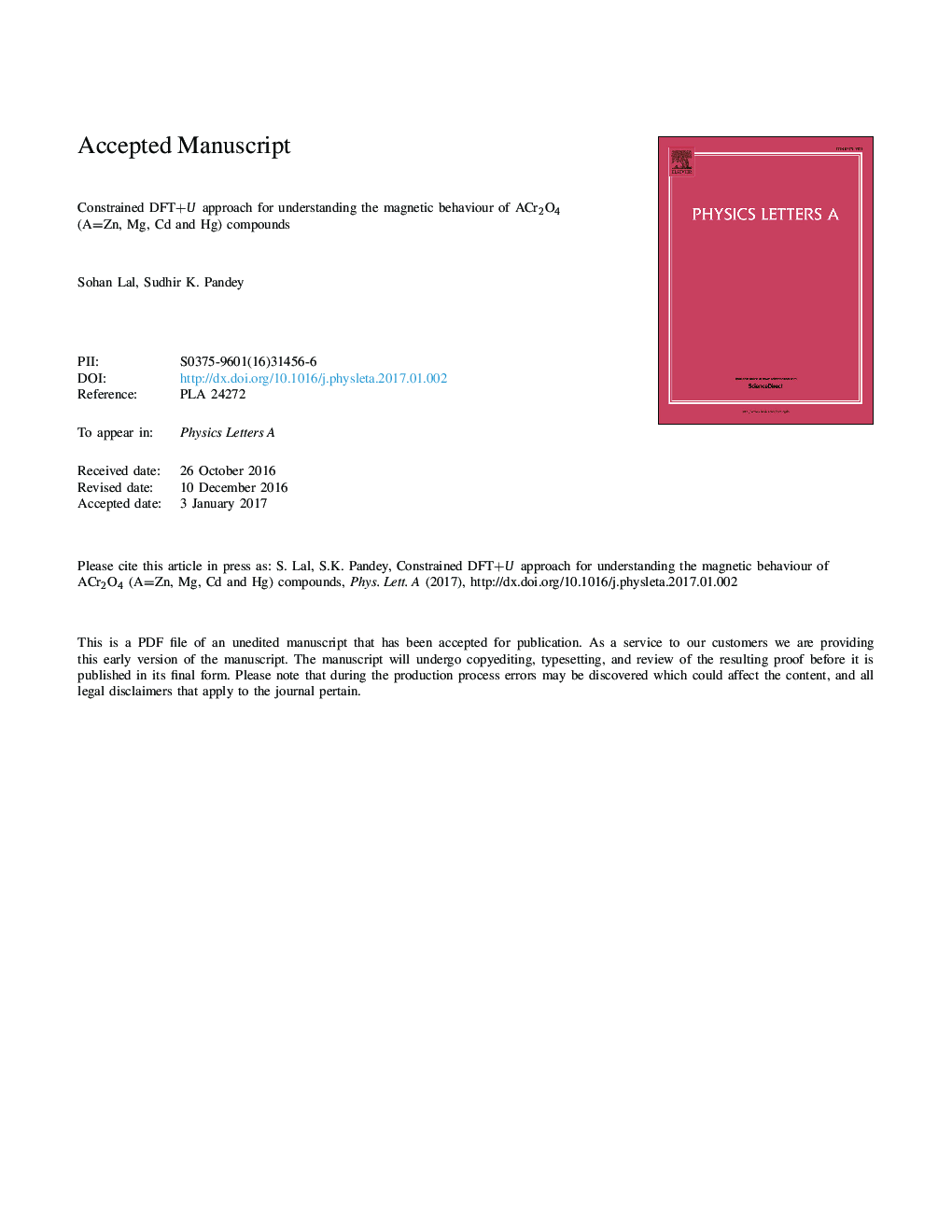| Article ID | Journal | Published Year | Pages | File Type |
|---|---|---|---|---|
| 5496555 | Physics Letters A | 2017 | 22 Pages |
Abstract
In this work, we try to understand the inconsistency reported by Yaresko (2008) [10] in the theoretically estimated sign of nearest neighbour exchange coupling constant (J1) and variation of its magnitude with increasing U in ACr2O4 (AÂ =Â Zn, Cd, Mg and Hg) compounds by using density functional theory. In unconstrained calculations, the sign of J1 and variation of its magnitude as a function of U in the present study are not consistent with the experimental data and not according to the relation, J1ât2U, respectively especially for CdCr2O4 for U>3Â eV and HgCr2O4 for U=2-6Â eV. Such an inconsistent behaviour of J1 is almost similar to that of Yaresko for these two compounds for U=2-4Â eV. For ZnCr2O4 and MgCr2O4, the sign of J1 and variation of its magnitude in the present work are in accordance with the experimental data and above mentioned relation, respectively for U=2-6Â eV and are similar to that of Yaresko for ZnCr2O4 for U=2-4Â eV. However, in constrained calculations the sign of J1c and variation of its magnitude in the present work are according to experimental data and above mentioned relation, respectively for all four compounds. Hence, the present study shows the importance of constrained calculations in understanding the magnetic behaviour of these spinels. The values of magnitude of Curie-Weiss temperature (ÎCW)c for ZnCr2O4Â >Â MgCr2O4Â >Â CdCr2O4Â >Â HgCr2O4 for U=2-5Â eV, which are according to the order of experimentally observed values for these spinels. The calculated values of (ÎCW)c for ZnCr2O4, MgCr2O4, CdCr2O4 and HgCr2O4 are â982 K, â721 K, â147 K and â122 K, respectively at U=5Â eV.
Related Topics
Physical Sciences and Engineering
Physics and Astronomy
Physics and Astronomy (General)
Authors
Sohan Lal, Sudhir K. Pandey,
